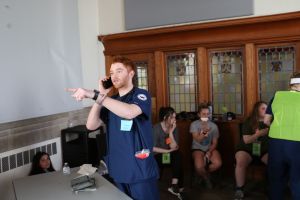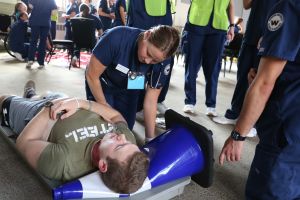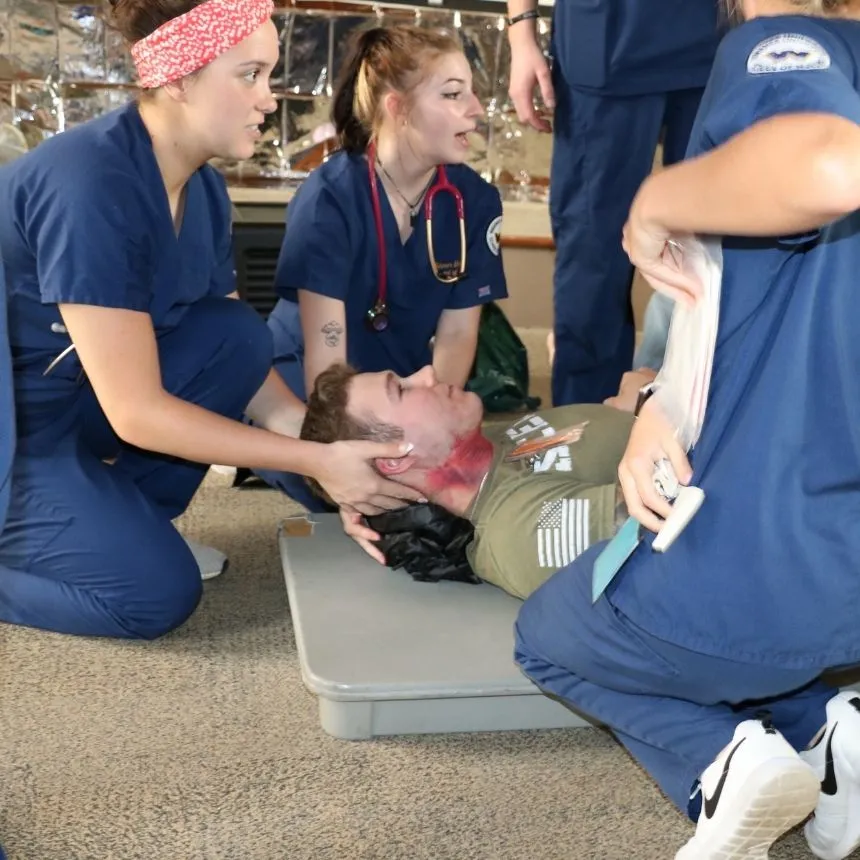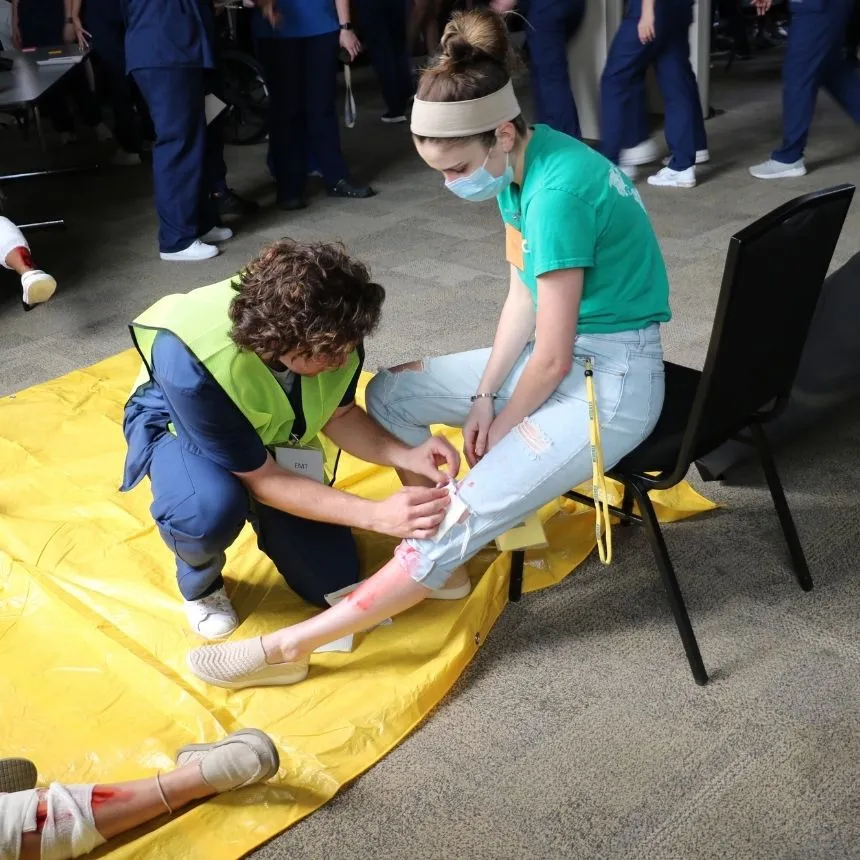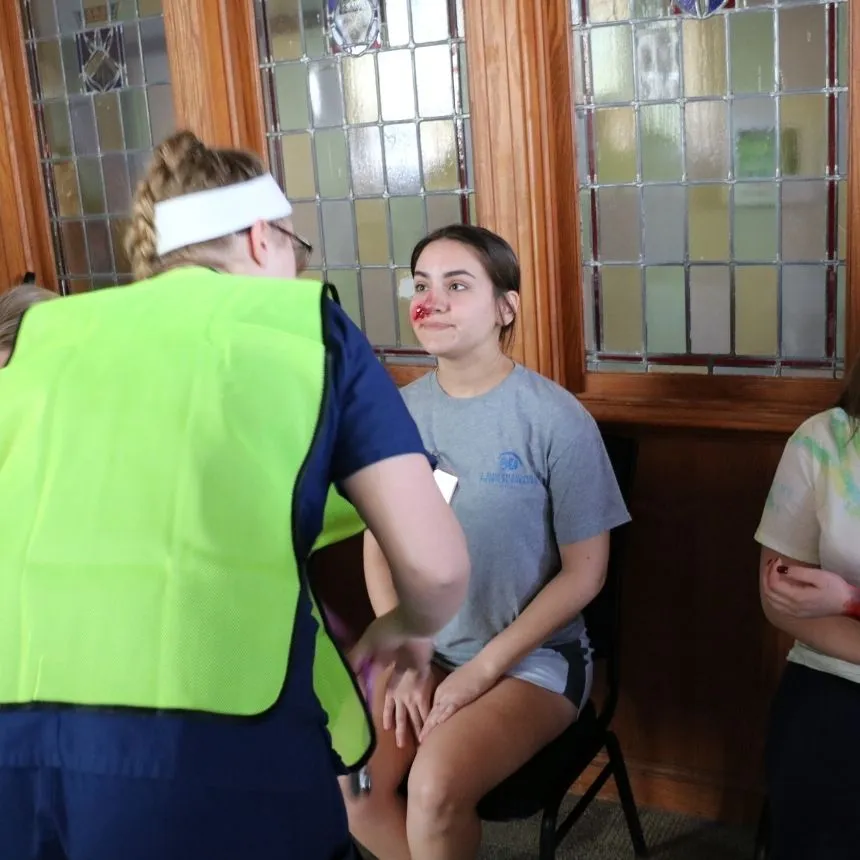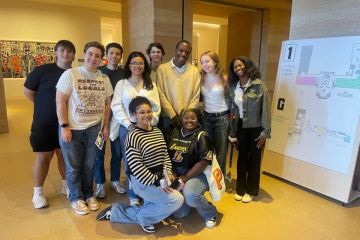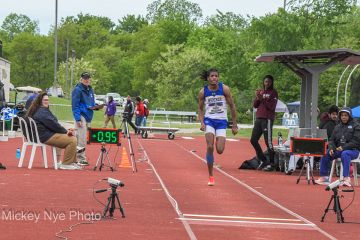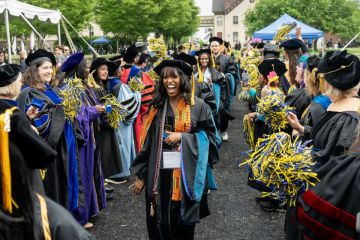Disaster Simulation Prepares Nursing Students for Emergency Response
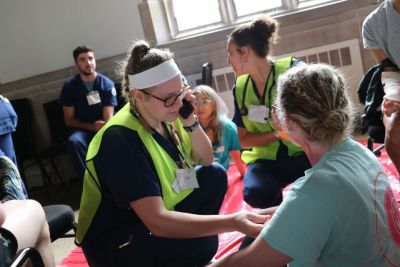
Today’s world is a hectic and messy one. When disaster strikes, we rely on our first responders to have the knowledge and experience to handle and mitigate any situation.
Undergraduate nursing students, who will soon be among the ranks of frontline responders, had the opportunity to test their emergency preparedness and response skills at the School of Nursing’s live disaster simulation.
The strategically-designed event put approximately 190 students at the center of a realistic emergency response at a concert following a scaffolding collapse. They were tasked with applying classroom knowledge to a fast-developing scenario by exercising their understanding of protocols in a disaster situation, as well as their skills in decision-making, leadership, and readiness.
The simulation ran concurrently in two locations on campus. Lathem Hall served as the disaster site complete with sirens, alarms and students in makeup acting as victims and concert-goers.
Students in Lathem were given various roles, from first responders to disaster nurses, associated with a large-scale emergency response. Senior Joseph DiBlasio served as charge disaster nurse and was responsible for managing nurses at the simulated concert event.
DiBlasio says the exercise was a valuable opportunity to gain hands-on, realistic disaster experience as it allowed his strengths to shine and he was able to identify areas for improvement.
“My biggest takeaway from today’s simulation was how essential communication and teamwork are when working in healthcare, especially in the event of a disaster,” DiBlasio said, who recently accepted a job at Virtua Lourdes Hospital in New Jersey.
“This experience improved my thinking as a nurse by revealing my delegation and planning of care weaknesses.”
Across campus in Founder’s Hall, the Center for Simulation was transformed into a hospital setting equipped with an emergency room, medical surge unit, and incident command center. Students assigned to this location were given the roles of staff nurse, nurse
managers, and discharge planners, and emergency operations staff.
Senior Rachael Waid acted as the discharge planning charge nurse. According to Waid, who will work in Abington Health Hospital’s surgical intermediate unit after graduation, the experience informed her of how to best plan for a surge of disaster victims and implement the concept of reverse triage.
“By determining which patients were able to be safely discharged, my team and I were able to create an inpatient surge capacity to decrease the workload of other units,” said Waid. “This approach made me gain more awareness on analyzing urgent versus non-urgent needs and focus on achieving the greatest good for the greatest number of people following a mass casualty.”
The exercise concluded with a group debrief designed to allow students to review and analyze actions taken throughout the simulation.
For Alexandria Reid, being able to put nursing curriculum into action ahead of entering the health care industry was transformational.
“These simulations teach us skills and how to properly conduct ourselves for what we may go through once we begin our careers,” said Reid. “I am thankful that Widener’s nursing program puts together simulations like these to enhance our learning experience."
